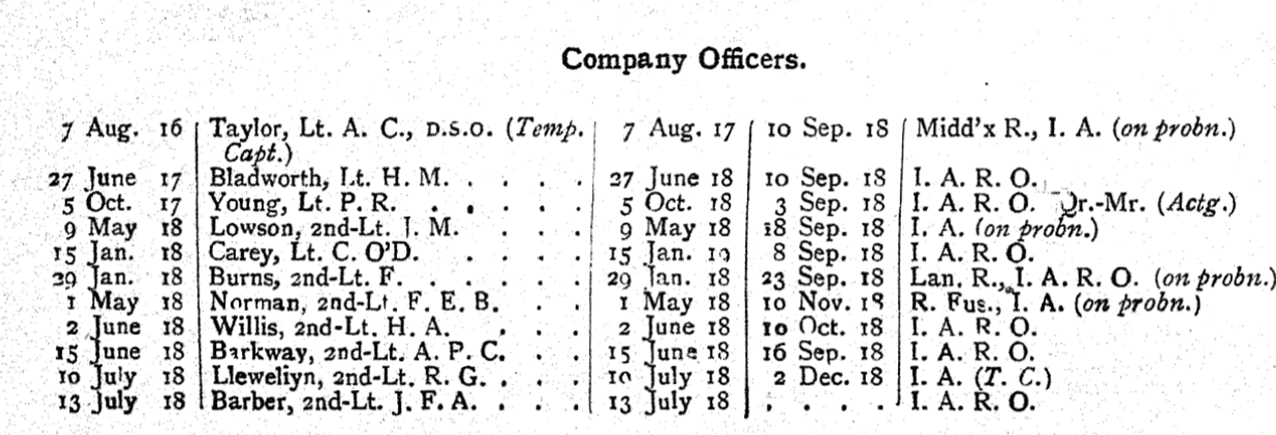This article is about the 3rd Battalion 2nd Queen Victoria’s Own Rajput Light Infantry and will help you to research the Battalion and the soldiers who served with it during the First World War. I have written separate articles for the 1st and 2nd Battalions and a series of guides to researching soldiers who served in the Indian Army. To view these guides click on the blue links below:
- 1st Battalion 2nd Queen Victoria’s Own Rajput Light Infantry
- 2nd Battalion 2nd Queen Victoria’s Own Rajput Light Infantry
- Guides to Researching Soldiers who Served in the Indian Army during World War One
The 3rd Battalion 2nd Queen Victoria’s Own Rajput Light Infantry in the First World War
Lineage: The 3rd Battalion 2nd Rajputs was formed in India in August 1918 and disbanded in 1919. For a history of the Regiment’s lineage see my page on the 1st Battalion, 2nd Queen Victoria’s Own Rajput Light Infantry
Class Composition of the Battalion: 4 Companies of Rajputs.
The 3rd Battalion 2nd Rajputs was a short-lived, war-raised Battalion which served in the 8th (Lucknow) Division. The Battalion did not serve outside of India during its short existence and has left few records to be consulted. Despite receiving a very satisfactory confidential report in 1919, the Battalion disbanded the same year. The first commanding officer was Major (Acting Lieutenant-Colonel) Henry Oswald Wood, who had spent the majority of his career serving with the 8th Rajputs. Wood had served in the Second Anglo-Boer War and on the North West Frontier and was a long-serving officer who trained the Battalion well. It was crucial for war-raised battalions to have a good quality cadre of British and Indian officers to help train new officers and men.
Below is an extract from the April 1919 Indian Army List which shows how heavily the Battalion relied on newly commissioned British officers. The date on the left records when an officer was first commissioned and the third column with dates when they were appointed to the Battalion. The majority of officers were either from the Indian Army Reserve of Officers (IARO) or on probation.
The Battalion was inspected by Brigadier-General A. Cadell, Commanding Allahabad Brigade on 29 March 1919 who reported:
General remarks: The general system of training and the progress made by this Unit which was only formed in August last, was very satisfactory, and reflects much credit on Lieutenant-Colonel H. O. B. Wood, the Commanding Officer. Officers both British and Indian have definite duties assigned to them, and individuality and independence of action are encouraged.
General Observations by Major-General Sir A. B. Scott, K.C.B., D.S.O, Commanding 8th (Lucknow) Division – A very satisfactory report. I concur in the remarks of the Brigade Commander. Great credit is due to Lieutenant-Colonel H. O. B. Wood for the way in which he trained this regiment.
Brigade Commander – Major (Acting Lieutenant-Colonel) H. O. B. Wood. Is in command of a newly raised battalion; has devoted himself to the work of rendering this unit efficient; very great credit is due to him for the great progress made by his battalion; is keen, hardworking and dependable.
Confidential review reports on Indian Army units, depots, British officers, etc. for 1918-1919: IOR/L/MIL/7/17030.
War Diaries of the 3rd Battalion 2nd Rajputs
Unfortunately, there are no war diaries for the 3rd Battalion 2nd Rajputs.
Further Sources for the 3rd Battalion 2nd Rajputs
The Indian Army List will provide information regarding the British and Indian officers who served with the Battalion. There is a single confidential report which is held at the British Library which I have quoted from above: Confidential review reports on Indian Army units, depots, British officers, etc. for 1918-1919: IOR/L/MIL/7/17030. This report also contains the annual confidential report of the British officers serving with the Battalion.

